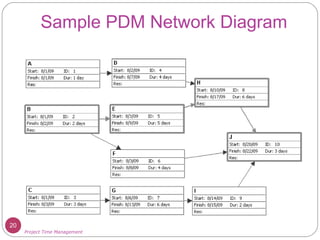The document discusses project time management. It covers the importance of project schedules and how individual work styles and cultural differences can cause schedule conflicts. It then discusses key project time management processes like activity definition, sequencing, resource and duration estimating, and developing the project schedule. The critical path method is also explained as a technique to predict total project duration and determine which path has the least amount of slack.
















































































